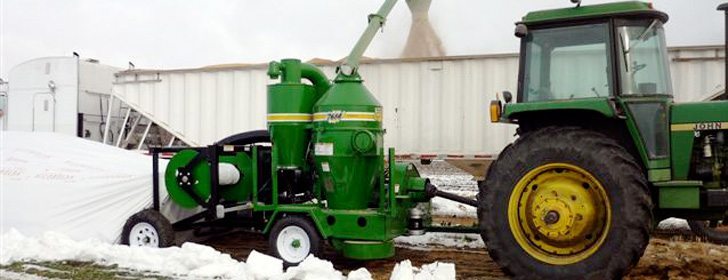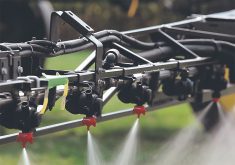FARGO, N.D. — Trying to quickly and efficiently empty a grain bag is the storage method’s obvious disadvantage, but the task can also be physically dangerous.
As well, grain vacuums can create a special set of risks.
“Most farmers already have a grain vac,” says Mark Patterson of Walinga.
The vacuums create tremendous suction energy when moving large quantities of grain pneumatically. That suction can trap and suffocate a hose operator if plastic material wraps around him inside the bag.
“It’s an issue some people don’t want to talk about much,” says Patterson, whose company is offering a new product that safely takes advantage of the vacuum when recovering grain from a bag.
Read Also

Fusarium head blight mycotoxin detector in the works
A PhD student at the University of Saskatchewan has been working on developing a method of detecting fusarium damaged kernels to ease the struggles of producers, agronomists and industry.
“People who have first-hand experience with the risk are more than willing to talk about it. We all think we can fight our way out of a plastic bag, but a grain bag isn’t just a regular plastic bag. Think about it. It has to be strong to contain all that grain.”
Patterson, who exhibited his company’s new FlexStor Vac Attach bag unloader at a trade show in Fargo last year, said he was surprised by the number of farmers who talked to him about people they knew who died emptying a bag with a grain vac.
“Excess bag material from the front gets sucked back into the bag where the guy is picking up grain. It instantly wraps around his arms and his head. He’s like an Egyptian mummy,” Patterson said.
“Can’t use the cell phone. Can’t reach for a knife in your pocket. Can’t move your arms or legs and you can’t even breathe if your head is covered. It’s totally air-tight and the tremendous suction just keeps on pumping out more air, making the plastic tighter.”
Patterson said most producers who looked at the machine talked about efficiency, but safety was also a motivation.
“Many of the farmers who decided to buy (our product) were buying because they saw that it’s a safer way to unload a grain bag.”
Tom Linde, Walinga’s North American sales manager in Guelph, Ont., said the company is aware of the dangers.
“It happened to one of our customers in Iowa. He was using the grain vac to empty a grain bag and it instantly wrapped him up,” he said.
“But he was the lucky one. He was able to reach his knife before the plastic got too tight and he cut himself free. He said he’d never go into another grain bag for as long as he lives. It’s just not a smart thing to do.”
The FlexStor Vac Attach Grain Unloader 1055 was developed by Koyker Manufacturing in Lennox, South Dakota, and marketed by Walinga. Koyker says it is the largest auger of its type on the market.
In designing the Vac Attach, the company focused on the overall expense of grain bagging systems and the risk in getting grain out of bags.
“This is just an addition to the input end so you can bring grain directly from the bag, through your grain vac and into your truck,” Patterson said.
“Vac Attach has two knives that tear the bag in half. This creates a natural flow for the grain into the two horizontal augers, while the hydraulic motor rolls up the two halves of the bag.”
Both augers feed to the middle, where the Agri-Vac suction hose picks up the grain. The hydraulic motor winds up the two halves of the bag as it pulls the Agri-Vac and Vac Attach assembly further into the bag inch by inch.
Once emptied, the bag has been equally sliced left and right and wrapped up onto two separate spools for easy removal by one person.
The Vac Attach requires a minimum of 100 horsepower and a Category II three point hitch. It needs two hydraulic outlets and a 540 r.p.m. power take-off.
The 8,000 bushel per hour attachment that fits on a Walinga Agri-Vac costs $16,500.
Walinga, which is the Canadian distributor of the Vac Attach, will exhibit it at the Crop Production Show in Saskatoon and Manitoba Ag Days in Brandon.
For more information, visit www.koykermfg.com.
















